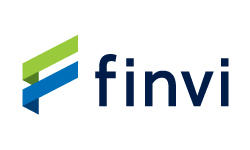The FDIC’s Q1 2025 Call Reports are out. And the story they tell? Loud and clear:
Consumer loan charge-offs are exploding—and not just at the margins. The biggest banks in the country are seeing year-over-year surges.
When you strip away marketing and press releases, all you’re left with is the call sheet. Schedule RI-B doesn’t spin. It reports. And what it shows is that charge-offs are returning to crisis-era territory.
🔍 What the FDIC Call Reports Show
These figures come straight from Schedule RI-B, the section where banks report net charge-offs on loans and leases, broken out by product type.
Relevant charge-off fields include:
- RIADB512 – Credit card charge-offs
- RIADB514 – Other revolving/open-end consumer loans
- RIADF185 – Auto loan charge-offs
- RIADK205 – All other consumer loan charge-offs
When those four fields move together, it’s no longer product-specific. It’s systemic risk. That’s what’s happening now.
💣 Top 20 Banks in America by Consumer Charge-Offs (Q1 2025)


📈 3-Year Charge-Off Trend: Q1 2023 – Q1 2025
FDIC filings from the last three years show consistent growth in charge-offs across every major lender. This isn’t a fluke—it’s a compound signal that credit stress is mounting at scale.
🔁 Top 5 Bank Charge-Offs: Historical Comparison

All 20 banks reported an increase in charge-offs for three consecutive years.
The average year-over-year growth across the top 20 was 10–14%, with some institutions showing a total three-year increase exceeding 35%.
🔥 What’s Driving the Charge-Off Surge?
According to the New York Fed, Fitch Ratings, and TransUnion:
- Subprime credit card and auto delinquency rates are at post-2011 highs
- Household savings rates have fallen below pre-COVID levels
- Consumer leverage is rising amid elevated interest rates
- Buy Now, Pay Later (BNPL) defaults are quietly increasing and feeding into charge-off categories
What we’re seeing now is a full-sector return to asset quality degradation.
🧠 Why This Matters
This trend isn’t about quarterly noise. It’s about institutional exposure to shifting consumer behavior, shrinking liquidity, and an economy under stress. The FDIC call sheets—filed under penalty of law—are showing us in real time:
- Delinquencies are maturing into losses
- Write-offs are accelerating
- Balance sheet stress is growing at the highest levels of the banking system
These are the same fault lines that cracked in 2008—just under a new set of financial products and a different economic backdrop.





